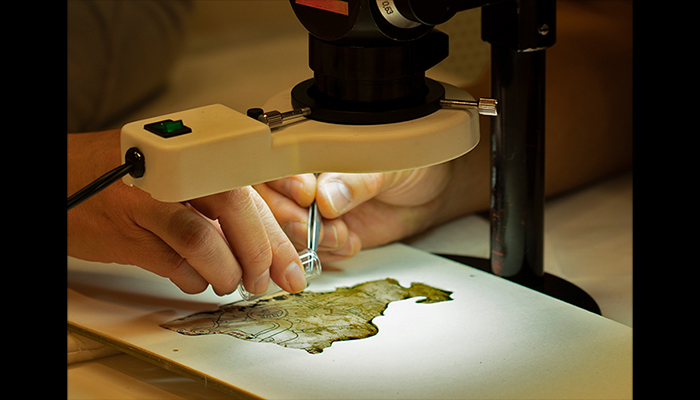
Collection of microsamples of fiber, pigments and organic material for laboratory analysis. Photo courtesy Gerardo Gutiérrez
Authenticating the Códice Maya de México
GETTY CENTER
Museum Lecture Hall
This is a past event
To attend in person, click "Get Tickets."
To watch online, register via Zoom.
This program will be offered in English and Spanish.
Este programa será ofrecido en inglés y español.
In 2017 several research teams analyzed the Códice Maya de México, previously known as the Grolier Codex, to assess whether the document was authentic or a forgery. Using both non-invasive and invasive scientific methods, the material evidence confirmed that the document was manufactured in the Early Postclassic period (AD 1000–1300), making it the oldest surviving book created in the Americas. Discussing topics ranging from the discovery of Maya Blue pigment to radiocarbon dating, Gerardo Gutiérrez will present the results of tests undertaken by the University of Colorado Boulder in collaboration with the Biblioteca Nacional de Antropología e Historia of the Instituto Nacional de Antropología e Historia of Mexico, to support the authenticity of the Códice Maya de México.
Gerardo Gutiérrez is a professor in the Department of Anthropology at the University of Colorado Boulder. He earned his doctorate in anthropology from Pennsylvania State University. He developed and now runs a spectrometry laboratory for the study of archaeological and historical materials from Mesoamerica.
This program coincides with the exhibition Códice Maya de México, on view October 18, 2022 through January 15, 2023 at the Getty Center Museum.
This talk will be followed by a symposium on November 5 at Cal State LA.
The conversation will be available on the Getty Research Institute YouTube channel following the event.